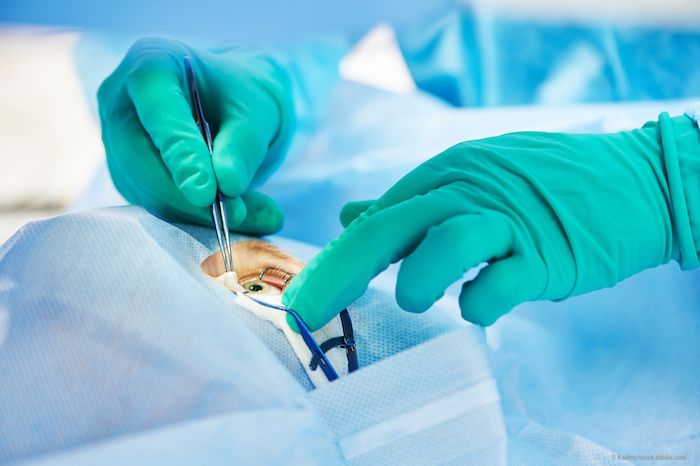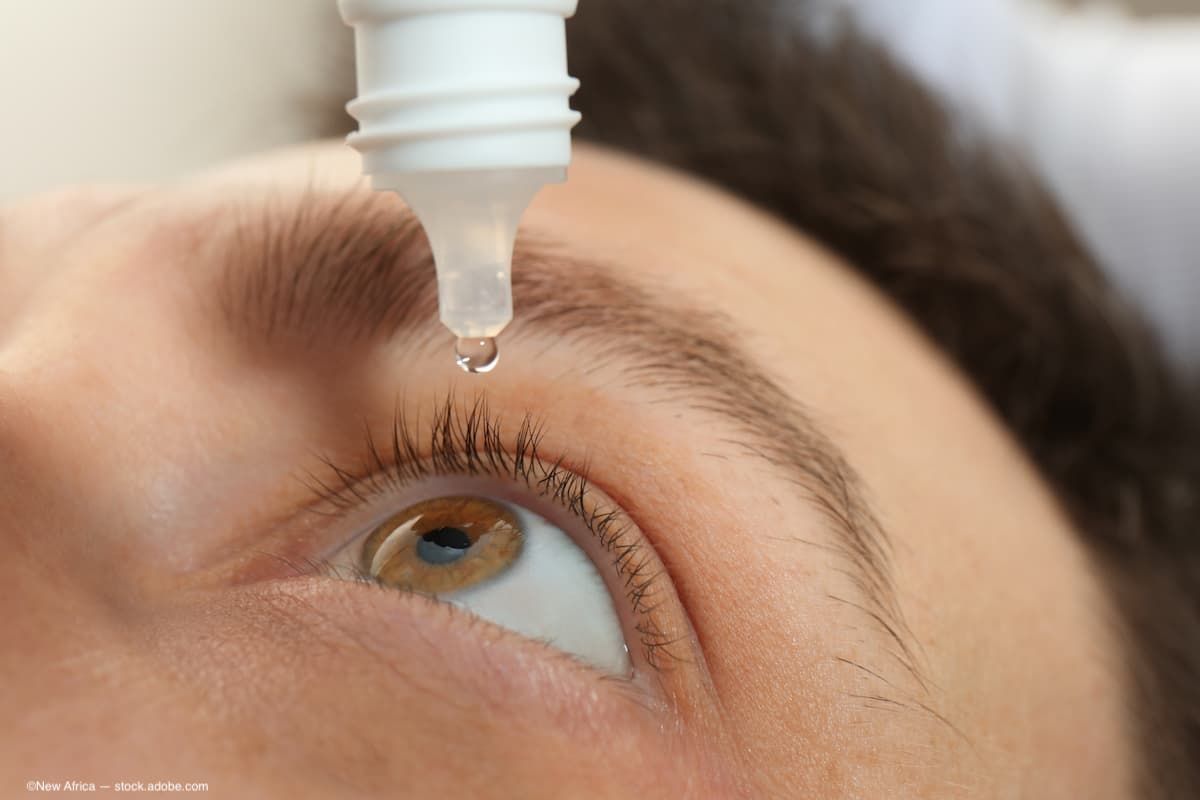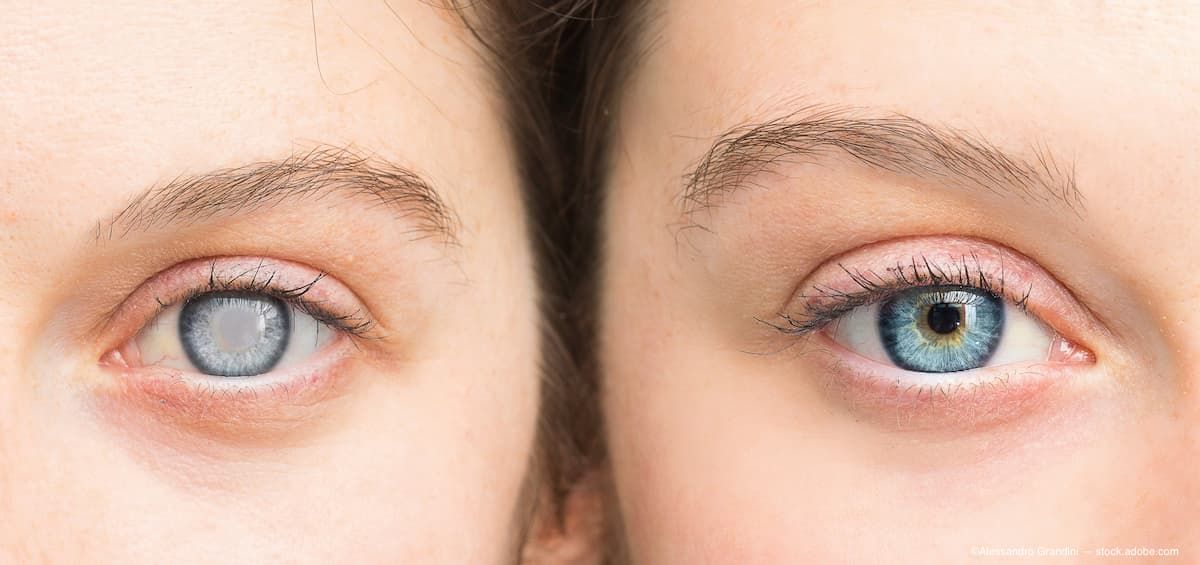Article
Bringing LASIK and dry eye into focus
Author(s):
During Refractive Day at ASCRS 2019, Julie Schallhorn, MD, MS, shed some new light on the topic by challenging conventional wisdom about dry eye and LASIK.

Findings from a large population-based study of patients presenting for refractive surgery challenge conventional wisdom about dry eye and LASIK, reported Julie Schallhorn, MD, MS, at ASCRS Refractive Day, being held during the annual meeting May 3-7 at the Convention Center in San Diego, CA.
Dr. Schallhorn, assistant professor of Ophthalmology, University of California San Francisco, presented evidence addressing the following three commonly held concepts:
- Dry eye that is present before LASIK will get worse after LASIK
- Women are much more likely than men to get bad dry eye after LASIK
- Patients with dry eye should have PRK instead of LASIK because LASIK will make their dry eye worse
- According to the study:
- Dry eye that is present before LASIK tends to get better after surgery
- Female gender has a “very, very” small effect on worsening of dry eye after surgery
- At 3 months after surgery, patients who had PRK report more dry eye symptoms than patients who had LASIK
“LASIK has been around for a long time, and there are certain beliefs about it that according to data from our study do not hold true,” she said.
Power from a large population
The analyses examining the truths about LASIK and dry eye were performed using data collected from confidential questionnaires that were completed preoperatively and three months after surgery by patients who presented for refractive surgery over a two-year period. It included more than 12,000 patients (>24,000 eyes) who represented a wide range of ages and were comprised of a slight preponderance of females.
“Because we had a very large population, our study had a lot of power to detect statistically significant differences,” Dr. Schallhorn said.
Overall, 41.5% of patients reported experiencing dry eye symptoms before surgery, and the severity ranged from very mild to very severe. Analyses to identify variables associated with dry eye identified only two factors – female gender and contact lens wear.
“Women were 23% more likely than men to reported dry eye symptoms and contact lens wearers were 45% more likely to report dry eye symptoms than their counterparts who were not wearing contact lenses,” Dr. Schallhorn said. “We found, however, that age, refractive error, and season of treatment were not associated with having dry eye symptoms preoperatively.”
Facts about dry eye worsening
Analyses looking at changes in dry eye symptoms after surgery showed that some patients developed dry eye de novo after surgery. Patients who reported dry eye preoperatively, however, tended to get better. The tendency for improvement was observed across the spectrum of preoperative dry eye severity levels, but patients who reported the worst dry eye before surgery had the biggest improvement postoperatively.
“What our study shows is that dry eye before surgery does not necessarily equal dry eye after surgery,” Dr. Schallhorn said.
She proposed that the tendency for dry eye to get better after surgery is probably the result of a several factors.
“We treat existing ocular surface disease is treated before surgery is performed, patients are getting engaged in their ocular health, and we are getting patients out of their contact lenses,” Dr. Schallhorn explained.
The gender effect
Across all age groups, females reported worse dry eye symptoms after surgery than men, but analysis of the change in symptoms from preoperative to postoperative showed that female gender had only a small effect on the change in dry eye symptom severity after surgery.
“The effect of gender was highly statistically significant because of our large population, but clinically, the effect was so small that I think it is not something that needs to be emphasized to patients,” Dr. Schallhorn said.
Surgery decision-making
An overwhelming majority of patients in the study underwent LASIK. Data on preoperative dry eye symptoms showed no significant difference comparing patients who went on to have PRK versus those who had LASIK.
Results from multivariable regression modeling done to identify factors associated with change in dry eye symptoms from pre- to postoperatively found only three independent predictors, and of the three, PRK had the strongest effect. Female gender was also associated with greater worsening of dry eye, and there was an inverse correlation between preoperative dry eye symptom score and worsening after surgery, Dr. Schallhorn said.
Age, ablation pattern (wavefront-guided versus standard), type of refractive error (myopia versus hyperopia), and preoperative contact lens wear were not independently associated with worsening of dry eye after surgery.
Discussing the implications of the study for patient care, Dr. Schallhorn concluded that surgeons still have to inform patients that there is a possibility of developing dry eye after surgery.
“But the findings of our study give me greater confidence to tell patients who are contact lens wearers and uncomfortable because of dry eye symptoms that they will probably get better after surgery,” she said.
Disclosures:
Dr. Schallhorn is a consultant for Zeiss, Johnson & Johnson Surgical and Avedro.
Newsletter
Don’t miss out—get Ophthalmology Times updates on the latest clinical advancements and expert interviews, straight to your inbox.





